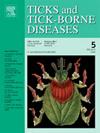在美国上中西部莱姆病流行地区,居民愿意支付基于住宅物业和基于社区的蜱虫控制方法
IF 3.4
2区 医学
Q2 INFECTIOUS DISEASES
引用次数: 0
摘要
蜱和蜱传疾病在美国日益受到关注,在某些重点地区负担很高。虽然对各种蜱虫控制和疾病预防方法的可接受性进行了研究,但公众在个人或社区一级为环境干预措施付费的意愿却没有得到很好的描述。使用作为更大调查的一部分收集的数据,我们对密歇根州、明尼苏达州和威斯康星州莱姆病流行县的居民进行了额外的分析,以评估他们支持和每年支付各种基于财产的蜱虫控制方法的意愿,并检查可能影响支付意愿的人口统计学特征。79%的受访者愿意对他们的财产进行某种形式的蜱虫控制,大多数人更喜欢自我应用。园林绿化和天然农药是最受欢迎的选择,人们愿意每年分别支付78美元和61美元。高收入、高疾病流行率和高患病可能性都与支付更多费用的意愿相关。当被问及社区控制选项时,97%的受访者表示有兴趣,无论家庭特征如何,受访者都愿意每年支付52美元用于社区控制方案。这些结果表明,在中西部上游地区,无论是在个人财产层面,还是在地方、公共资助的、以社区为基础的项目上,蜱虫控制工作的需求都是适度的。这些发现为评估社区特征、成本结构、环境属性和为社区蜱虫控制项目产生净效益所需的有效性提供了一个起点。本文章由计算机程序翻译,如有差异,请以英文原文为准。
Willingness to pay for residential property-based and community-based tick control methods in Lyme disease-endemic areas of the Upper Midwest, United States
Ticks and tickborne diseases are of increasing concern in the United States, and the burden is high in certain focal areas. While the acceptability of various tick control and disease prevention methods has been studied, the public’s willingness to pay for environmental interventions at the individual or community level is less well described. Using data collected as part of a larger survey, we performed an additional analysis of residents of Lyme disease-endemic counties of Michigan, Minnesota, and Wisconsin to assess their willingness to support and pay annually for various methods of property-based tick control and examined demographic characteristics that might influence willingness to pay. Seventy-nine percent of respondents were willing to perform some form of tick control on their property, with most preferring self-application. Landscaping and natural pesticide application were the most popular options, with people willing to pay an estimated $78 and $61 annually, respectively. High income, a high perceived prevalence of disease, and a high perceived likelihood of disease were all associated with a willingness to pay more. When asked about a community control option, 97 % of respondents indicated interest, with respondents being willing to pay $52/year for a community-based program regardless of household characteristics. These results suggest a moderate demand in the Upper Midwest for tick control efforts at both the individual property level and for local, publicly funded, community-based programs. These findings provide a starting point for assessing community characteristics, cost structure, environmental attributes, and efficacy needed to generate net benefits for community-based tick control programs.
求助全文
通过发布文献求助,成功后即可免费获取论文全文。
去求助
来源期刊

Ticks and Tick-borne Diseases
INFECTIOUS DISEASES-MICROBIOLOGY
CiteScore
6.90
自引率
12.50%
发文量
185
审稿时长
6-12 weeks
期刊介绍:
Ticks and Tick-borne Diseases is an international, peer-reviewed scientific journal. It publishes original research papers, short communications, state-of-the-art mini-reviews, letters to the editor, clinical-case studies, announcements of pertinent international meetings, and editorials.
The journal covers a broad spectrum and brings together various disciplines, for example, zoology, microbiology, molecular biology, genetics, mathematical modelling, veterinary and human medicine. Multidisciplinary approaches and the use of conventional and novel methods/methodologies (in the field and in the laboratory) are crucial for deeper understanding of the natural processes and human behaviour/activities that result in human or animal diseases and in economic effects of ticks and tick-borne pathogens. Such understanding is essential for management of tick populations and tick-borne diseases in an effective and environmentally acceptable manner.
 求助内容:
求助内容: 应助结果提醒方式:
应助结果提醒方式:


